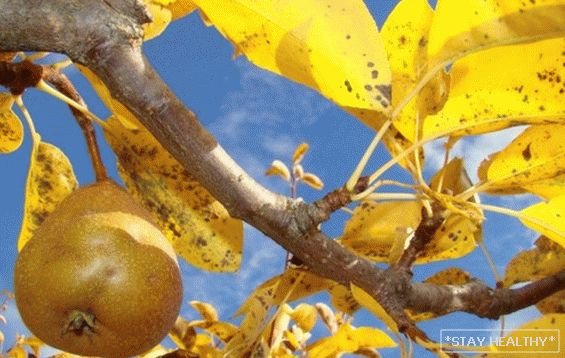 Чт, 17 май 2018 Автор: Семён Иванов
Чт, 17 май 2018 Автор: Семён Иванов
Early pear varieties ripen in July and August. Their
fruits are usually juicy, fragrant, with excellent taste. But unfortunately,
due to their high juiciness and low solids content, they are not
subject to even short storage and transportation, are suitable
that for use in fresh quality and processing into juices and
compotes.
The jam of them turns out too watery, dry the slices
on dried fruits is almost impossible.
The harvest of autumn varieties ripens in September. These fruits are more
dense and deadly. They make excellent blanks: slices are not
boiled soft stewed fruit, jam is thick, dried fruit is excellent
consistency. Filmed to peak ripeness, they are able to be stored 1-2
months
Winter pears are harvested in October and even in early November. To that
the moment they are still solid and not too tasty. Taste, aroma and
tenderness their pulp acquires only after some time after
storage, but fresh, they have the opportunity to lie down to
mid-winter, and in special storage facilities until spring.
It seems logical that gardeners should have garden varieties of all
ripening periods: for summer consumption, processing and storage.
But in most cases it is necessary to be limited to the first two
in groups.
Contents
Varieties for a long summer
The most obvious limitation is the duration of the growing season.
period From the flowering of trees to the collection of late fruits passes 5
month, and all this time should be warm weather. If the harvest
will fall under the early frosts that may already be in September, then
pears will become unsuitable for long-term storage: cellular
the processes in them will stop, the frostbitten part will die away, and through
pathogens of rot penetrate the damaged skin.
Moreover, after harvesting, the tree still needs time for
preparing for the winter. If frost soon hits, then tender buds,
undigested timber and retired roots can seriously
get injured. But even after a long autumn hard frost tree
difficult to sustain – his tissues are not dense enough, and winter sleep
shallow, because soon you need to wake up for the next
flowering
Also, pear is by nature more drought-resistant than an apple tree,
but worse tolerates high humidity. In a wet climate, she
severely affected by fungal diseases, especially scab. If a
early ripening varieties still have time to mature with a slight defeat, then
late fruits often lose any commodity value.
So long warm spring, summer and autumn, mild winter, dry
air – such natural conditions exist only in the south of Russia, in
Moldova, Ukraine, the Caucasus and other southern regions. Exactly
the best late varieties are traditionally grown here, many of
which carry the genes of the local subspecies of the wild pear: Caucasian,
almond, olive leaf, Syrian. They are constantly added
modern, even more delicious, elegant and resistant to
diseases.
Лучшие старые сорта: Кюре (Вильямс зимний),
Concord, Artyomovsk Winter, Vera Kiev, Vera Michurina, Dyushes
Winter, Pass-Crassin, Josephine, Bere Ardanpon, Winter
kubarevidnaya.
Современные зимние сорта: Сокровище, Елена,
Zest of Crimea, Emerald, Maria.
Options for northerners
Northerners to grow winter varieties will not work. But with autumn
the situation in recent years has improved significantly – there were
zoned varieties for Belarus, the Middle Zone, even for
Northwest and Ural.
Рекомендуемые позднеосенние сорта: Февральский
souvenir, Mlievskaya, Dekabrinka, Uralochka, Belarusian Late,
Northerner, Lira, Leningrad.
The success of their cultivation largely depends on the microclimate
specific location and proper farming practices. Late pears will be
grow poorly in lowlands where humid air stagnates, and
under cold winds. The soil should be fertile, but, by no means
The case is not waterlogged. In damp places under the landing pits
need to arrange drainage, and the trees themselves planted on the mounds.
It is very important to maintain impeccable sanitary cleanliness of the garden,
constantly fight against fungi and pathogens of rot.





